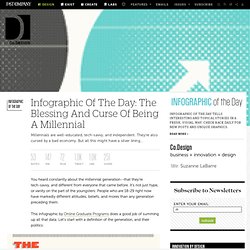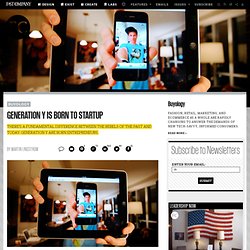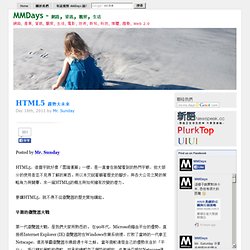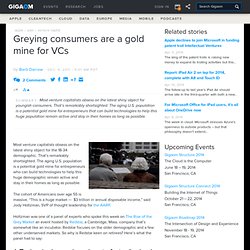

至尊變形平板. Taiwan. Korea. 5 Key Digital Media and Advertising Trends for 2012. The past year didn’t see the emergence of the next Facebook or Twitter.

Rather, it saw social and digital spread to new places and along the way enabled a wave of new opportunities for content creators and marketers. Recently, I had an opportunity to speak about those opportunities at ThinkLA’s Trends Breakfast, a gathering of media, entertainment and advertising professionals in Los Angeles. While you can view my full presentation in the video above, here’s a quick look at some of what I think lies ahead for 2012 in media and advertising (with some fresh updates since my presentation, which was given in early November). 1. Social Curation and Mobile Will Drive Growth for Media Organizations The rise of mobile and tablets is having a profound impact on media consumption habits. More broadly speaking, tablet apps that also take into account what your social network is sharing – like Flipboard, Zite and Pulse – are becoming important new distribution channels. Infographic Of The Day: The Blessing And Curse Of Being A Millennial. You heard constantly about the millennial generation--that they’re tech-savvy, and different from everyone that came before.

It’s not just hype, or vanity on the part of the youngsters: People who are 18-29 right now have markedly different attitudes, beliefs, and mores than any generation preceding them. This infographic by Online Graduate Programs does a good job of summing up all that data. Let’s start with a definition of the generation, and their politics: It’s that second panel about politics that’s really surprising: The percentage voting for Obama represents the largest age-based disparity ever recorded. It’s worth pausing on that for a second, because voting, contrary to popular opinion, doesn’t tend to change all that much as you age. Generation Y Is Born To Startup. Every generation rebels against their parents.

When parents approve, their offspring disapproves. Parent says black, adolescent teen says white. Psychologists who are expert in these matters explain that rebellion is a factor in establishing identity. Online video consumption moves from minutes to hours — Online Video News. HTML5 趨勢大未來. Posted by Mr.

Sunday HTML5,這個字就好像「雲端運算」一樣,是一直會在新聞看到的熱門字眼,但大部分的使用者並不見得了解的東西。 所以本文試著順著歷史的腳步,與各大公司之間的策略角力與競賽,來一窺HTML5的概念與如何擁有改變的潛力。 要講HTML5,就不得不從瀏覽器的歷史開始講起。 早期的瀏覽器大戰 第一代瀏覽器大戰,是我們大家所熟悉的。 IE與Netscape的市佔率消長,Firefox的崛起 (轉載from here) HTML 4.01標準 在第一次瀏覽器大戰的期間,HTML從95年的HTML 2.0開始,中間進展幾次版本,到最後一次版本99年的HTML 4.01。 (轉載自here) Flash的興盛 在99年後的HTML 4.01之後的七、八年間,HTML並沒有什麼顯著的進步。
Firefox搶下近三成的市佔率 (轉載自here) 復仇王子Firefox 回到了第一次戰爭之後,戰敗的國王Netscape在2003年被AOL併購之後,也促成了非盈利組織Mozilla Foundation,以社群的方式開發下一代的瀏覽器Firefox。 HTML5 Logo (轉載自here) HTML5的育成計畫 回到二千年的網路時代,對於瀏覽器廠商而言,舊標準早已經不敷使用,在現今硬體發展如此迅速下,HTML老規格卻無法享受到硬體的優勢,還處處受限。 目前HTML5還持續在編修當中,而且陸陸續續有新的功能草案加入進來,讓HTML5平台更加的完整, 預期明年會有候選的版本(W3C Candidate Recommendation)。 Google Chrome開啟超競爭時代 (轉載自here) Chrome開啟瀏覽器超競爭時代 或許Google很早就看到HTML5的潛力,也或許默默幫忙HTML5的推動。 從Google Chrome的一連串動作,很明顯地就是往「網路即平台」的夢想前進,這直接挑戰了長期擁有制空權的微軟平台。 Chrome的超高更新率與瀏覽器超競爭時代 (截圖自 Timeline of Web Browser) Steve Jobs on HTML5 (轉貼自here) 最佳HTML5廣告員:Steve Jobs關鍵性的一槍 HTML5在各瀏覽器的概略支援比例 (節錄自caniuse.com) IE with HTML5 (轉貼自here) 微軟:帝國的反擊. Greying consumers are a gold mine for VCs. Most venture capitalists obsess on the latest shiny object for the 18-34 demographic.

That’s remarkably shortsighted. The aging U.S. population is a potential gold mine for entrepreneurs who can build technologies to help this huge demographic remain active and stay in their homes as long as possible. The cohort of Americans over age 55 is massive. “This is a huge market — $3 trillion in annual disposable income,” said Jody Holtzman, SVP of thought leadership for the AARP. Holtzman was one of a panel of experts who spoke this week on The Rise of the Grey Market an event hosted by Redstar, a Cambridge, Mass. company that’s somewhat like an incubator. 1. The number-one desire of most aging Americans is to stay in their homes. Still, it’s a thorny problem. 2. The Wii and Apple’s iPad are big hits with aging Americans, but that was a happy accident. Smart companies will design products for older people while not condescending to them.